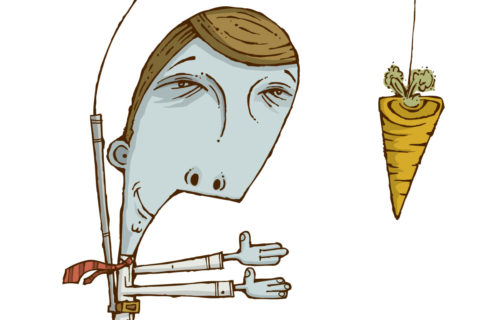Betty Adamou
The concept of “Research Through Gaming” as I like to call it (or RTG), has been popular amongst the market research glitterati in the past few months. If you type #NewMR or #Gamification in twitter you can see some of the things people have been saying about it. As with all new concepts there are skeptics, but mostly the comments are inquisitive and even excitable.
Ray Poynter’s NewMR online conference about ‘Gamifiction’ in December 2010 chose ten speakers to talk about their ideas on what “Research Through Gaming” is and could be, and what this would mean for our industry/respondents.
I discussed RTG at CASRO this March, where together with SSI, we spoke to 492 respondents about their gaming habits and what they think about the concept. We had some positive results, with over 75% of people saying they would play a research game and recommend it to a friend or family if they were fun to play or educational.
What is RTG?
I define RTG as “an organisation gaining data from the actions a respondent takes while playing a computer game and the way the respondent plays the game itself.”
Obviously we shouldn’t be aiming for research games to be exactly like video games. It would be far too costly to create the research equivalent of “Call of Duty”. Instead, we should be much more creative with our surveys and the way we ask our questions. One way of doing this is by making it more game-like and competitive.

We know already that the flash tools and even the fonts we use can affect survey results, and not always for the better, as Bernie Malinoff highlights in his paper ‘Sexy Questions, Dangerous Results?’ The key with this concept is to imagine research games as elaborate Flash Tools.
In 2009, in the Odenplan Station in Stockholm, someone had the idea of turning a flight of stairs, located next to an ascending escalator, into a giant piano. Sounds crazy right? It was called the “Fun Theory,” coined by thecreators of the experiment; Volkswagen. The result was that 66% more people used the stairs than the escalator. Research games give us and our respondents a chance to have some fun in the same way Volkswagen did with the giant piano.
Turning surveys into computer games will, to many people, sound like a crazy or unfeasible idea. However, at a time where budgets have been cut and WAPI response rates are at an all-time low, our industry needs to prove it’s need value more than ever. There’s no harm in exploring other possible methodologies.
Why RTG will work
1. Response rates are in decline. Although still an affective methodology, we’ve watched response rates for online surveys decline gradually for around two years. During my time working at a sample provider, getting basic European Nat Rep would take just a couple of days but became more difficult as time went on. In 2008, the UK response rate there was 10% in the UK and went down to 2% in 2009. But is it any wonder? Type in ‘Surveys’ on Google Image and what comes up is really not how we want surveys, or research for that matter to be visually represented.
2. Attention Spans are in Decline. A BBC survey showed that on average, UK Students have a 10 minute attention span. Any parents reading this are probably nodding their heads in painful agreement. Even as adults, our attention spans are forced into 140 character Tweets, 420 character Facebook status updates and so on. However, a recent PlayStation press release tells us that “On a daily basis, between 50,000 and 60,000 people host online sessions, with up to 13,000 users playing simultaneously for three hours on average.” Our own research with SSI showed us that while respondents mostly played on portable devices for under an hour (smartphones, PSP’s etc) they could spend 3+ hours playing on consoles.
3. There are huge developments in the Gaming Industry. TIGA reports that the gaming industry had a £1 Billion investment in 2009 and this is sure to increase. This kind of funding develops the massively creative and technological progress the industry has. Now more than ever, games are being developed due to the growth of new platforms available for gaming. The audiences for gaming have vastly widened and the opportunities to be involved with the product are plentiful.
4. Online Gaming Communities. At the time of writing, the PlayStation online community forum had over 2,500 users online. Think of this as a pool of respondents where, if the MR industry could make the research game forums as interesting as PlayStation has, we have a great chance of developing the most active MROC’S to date. There’s already the facility of ‘inviting friends’ into a game, giving scope for joint research and mini-communities.
5. Huge Mobile App Growth. According to Hans Vestberg, CEO of Ericsson there are 3 times as many smartphones being activated every minute than there are babies being born. So it’s not surprising that the mobile app market which has been predicted to grow by $35 million by 2014. This means the expectation to communicate with anyone or any company through apps will become standard, and as the iPhone has over 30% of its app downloads dedicated to games alone, (making it the most popular app genre) this is a great bandwagon to jump on. Using apps frees panelists from the confines of their office/home desk or physically filling in notebooks for diary studies. Diary studies (with photos too) can surely be done through an app. Respondents can view surveys available locally (locating their whereabouts using GPS), monitor their incentives, update their accounts and more. In fact one such App already exists.
6. You can play everywhere and anytime. So if respondents can take part in research through apps, this means that the time of day respondents can take part is: anytime. As a Project Manager, you’ll no longer fear the ‘dead-time’ between 5pm and 7pm on a weekday, when people are commuting back home from work, just because they haven’t got their laptops. They can do surveys on the move!
7. “Entertainment Snacking”. In the gaming industry, this refers to the process of playing games in ‘bursts’, e.g. players dipping in and out of games while they’re waiting for something. Respondents will be able to dip in and out of research games without the pressure to finish them right then and there because they can always go back into it later. In theory, project managers won’t have to estimate such high drop-out rates for longer surveys or even surveys which are in two or three parts, because they will have an increased likelihood of completion as the app is more accessible.
8. Games have become a huge part of our lives. We play games on social networking sites, on our phones and even take time out of our day to use a console to play. We even use gaming to simulate medical procedures, flights, conduct training within companies and more. These are called ‘serious games’ and already exist in a highly advanced fashion. In a recent article by Fast Company they discuss serious games saying that: “The Entertainment Software Association claims that 70% of major employers use interactive software and games for training. Many are simulations that enable users to perfect skills in 2-D before taking on the 3-D challenges of real life. Doctors, for example, may practice cutting open avatars…before turning to humans. Such simulations make up a billion-dollar-plus business that is growing fast.” In this same article they discuss how Jesse Schell, a 40-year-old game designer and Professor, talked in detail about the integration between real life and gaming, going as far as to say that even ‘Weight Watchers’ is a kind of game (points are assigned to food, and rewards are given for losing weight). “Sensors have gotten so cheap that they are being embedded in all sorts of products. Pretty soon, every soda can and cereal box could have a built-in CPU, screen, and camera, along with Wi-Fi connectivity…You’ll get up in the morning to brush your teeth and the toothbrush can sense that you’re brushing, so, ‘Hey, good job for you! Ten points’ from the toothpaste maker. You eat breakfast and get 10 points from Kellogg’s for eating your Corn Flakes, then grab the bus because you get enviro-points from the government, which can be used as a tax deduction. Get to work on time; your employer gives you points.” Imagine the scope for Research!
9. We’re already talking about it. When was the last time the MR industry got this excited about something? We’re talking about RTG on LinkedIn, the NewMR site, Research Live and articles about it are showing up on websites like this. There are companies out there already looking into it.
Execution
So what could Research Games look like and how could they work in the real, fast-paced, price sensitive world of Market Research? As with anything new, eventually processes will be streamlined, and we can benefit from economies-of-scale. People working on research games as a methodology will become increasingly expert in them the more they create and use them. I predict there will be four main types of Research Games which we could potentially use right now and a fifth type which will need to wait for a few years. There’s even a sixth type (Sixth Sense Technology Research) but this type is a whole paper in itself.
1. ‘Avatar Based Research Games’ (ABRG’s). ABRGs have the potential to be the most popular, but also the most expensive research game. Respondents would create an avatar either based in their own ‘real image’ (if encouraged to do so by the client) or create their ‘fantasy image’. Once the Avatar has been created, the respondent could be placed into a number of virtual environments and data can be collected on what the respondent/player/avatar does within that environment. This could be used for FMCG research or to test new retail environments. Tourist boards can see what sights people want to see in various countries. When a respondent dresses their Avatar, fashion retailers can give them a huge choice of clothes from their new collection to choose from. The scope for research is vast.
2. ‘Gaming as the Incentive Research Games’ (GATIRG’s) would allow the respondents to dip into games and back into research, so playing the games becomes the incentive to do the survey. Here, the project manager can choose a game to be used which is appropriate to the demographic of the respondents. The respondents play the game and at certain points in the game go back into the regular survey and so on and so forth.
3.‘Questions as Mini-Games’ (QAM’s) will probably be the most popular type due to its ease-of-use. The idea here is that each question is like a little game in itself. For example, if a fast-food chain was conducting research, they could ask ‘Please shoot the food items from the menu that you haven’t tried yet’. Or a Hair Gel brand could ask respondents to move a little person around the screen to get to their favourite type of gel. Flash and Java based tools are continuing to be increasingly interactive. I see this type of Research Game as the evolution of today’s flash tools.
4.‘Social Media Based Research Games’ (SMRG’s) are exactly what they say on the tin. With Facebook’s Farmville having over 80 million users, this is a huge pool of respondents the market research industry can tap into. But MR agencies and clients could create their own environments, so instead of farms, a local council could ask respondents to build their ideal neighborhood, or a Housing Association could ask respondents to build their ideal home with an allocated virtual budget. They could be rewarded for taking part by being given ‘free gifts’ to boost their profile or certain amounts of ‘free coins’ so they can build on their virtual worlds.
5. ‘Augmented Reality based Research Games’ (ARBRG’s). The key to ARBRG’s is that the way a respondents plays can tell your clients even more about their consumers. It also removes the need for respondents to hold something physically in order to control what happens on a screen. Microsoft and Sony have already created ‘Augmented Reality Games’ but one Microsoft development is particularly interesting: Project Natal, better known as Xbox Kinect. In the Project Natal video we can see a boy choosing a skateboard from his TV and using it to glide down a virtual street. Then we see his sister talking to her friend through the TV screen where they swop a recommendation on a dress. The girl virtually tries on the dress and paces the room, testing it out on herself. Using this video as a literal basis of what kind of research can be conducted, we can start with the boy choosing a skateboard. First of all, that the boy is choosing a skateboard, not a bicycle, bus, car or motorbike. This could be useful if your end-client was a motoring company or environmental agency. Your client could even be a skate-board artist, testing his or her most popular skateboard designs. The designer could go as far as to sell designs for the respondent playing the game. A girl trying on a dress offers scope for research for fashion designers, stylists, jewelers, pattern cutters, accessory designers, hair stylists etc. They can see what designs, colours and cuts are most popular. But let’s imagine that the girl took two hours choosing between some dresses in a virtual retail environment. This could allow the client to look into what factors are taking her so long. What are the things she’s contemplating? The amount of time it takes her could let retailers know whether they should add in sofas to their real stores or even get a coffee shop in to help while away the hours. They could even test new retail environments altogether.
The next step?
From the research results and the areas I’ve explored in this article, we can see that RTG can be a viable and long lasting methodology, it is, after all, one of the few methodologies which can continually evolve. It can also give market research the face-lift it needs. We’ll have opportunities to engage respondents, make our industry more relevant, create potentially bigger panels and online communities, and also have some fun with it in the meantime.
From here, I would love to see RTG taken seriously, hopefully there are some companies out there brave enough to invest in developing and testing research games.
Once this happens, I hope that companies within market research will be able to use RTG in moderation and with tact, and understand that its purpose is not to replace the survey with a game, but put the game into the survey and reach respondents where they really are.
Betty Adamou is UK Account Manager for Nebu. She is also on the programme committee for ESOMAR 3D Digital Dimensions 2011
The views expressed in this article are solely those of the author and do not necessarily represent the views of Nebu or the Nebu team




6 comments
Great article. I very much agree with the notion that the type of game matters, and that it obviously isn’t prudent to create a ‘Call of Duty’ type game. Additionally, the mobile app aspect makes it easier to collect data from gamers, by creating a simple but fun and engaging app. We actually created a quiz style app which we use to collect data.
I agree with your final note as well, that there is a fine line between replacing games with surveys and vice versa.
[…] Read the blog post: The Future of Research Through Gaming […]
[…] /2011/04/13/the-future-of-research-through-gaming/ http://bluetoad.com/publication/?i=137233&p=40 […]
[…] Read the blog post: The Future of Research Through Gaming […]
[…] apontam para um caminho convergente. Em comum, todas elas apresentam uma abordagem baseada em Gamification, uma tendência que já está sendo incorporada na estratégia de diferentes marcas e que se refere […]
[…] [Editor's Note: We have a real treat for our readers today! We asked our friends at Research World Connect if we could re-post a truly wonderful piece of thought leadership on research "gamification" by Betty Adamou. This was originally published on April 13th here. Regular readers know that we here at GreenBook Blog think that research games will be a major part of the future of market research and will be a key driver of growth during the transformation period we are in now. Betty has quickly positioned herself as one of our foremost thinkers on this topic and her breakdown of the various ways that MR can utilize gaming models in research is a must read!] […]